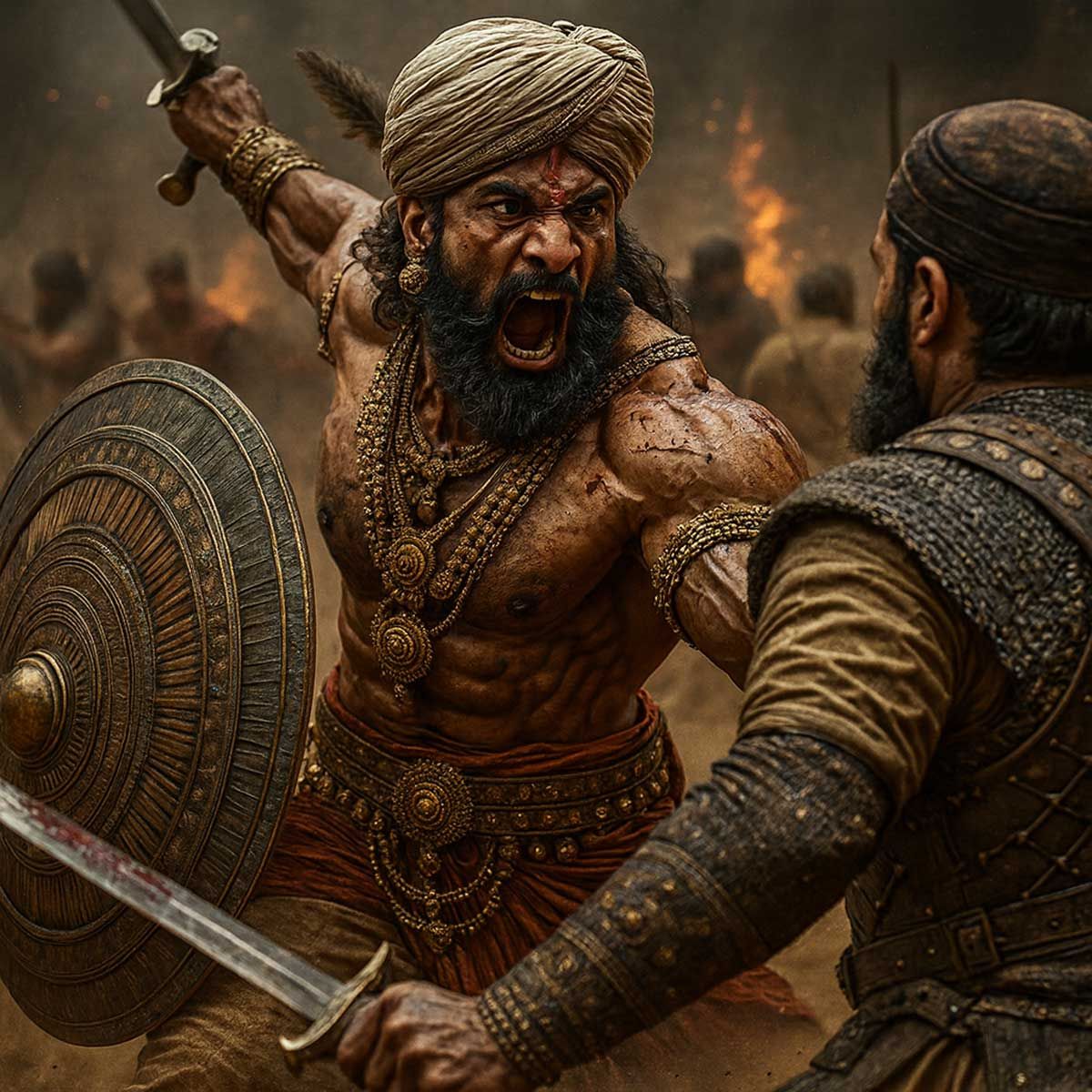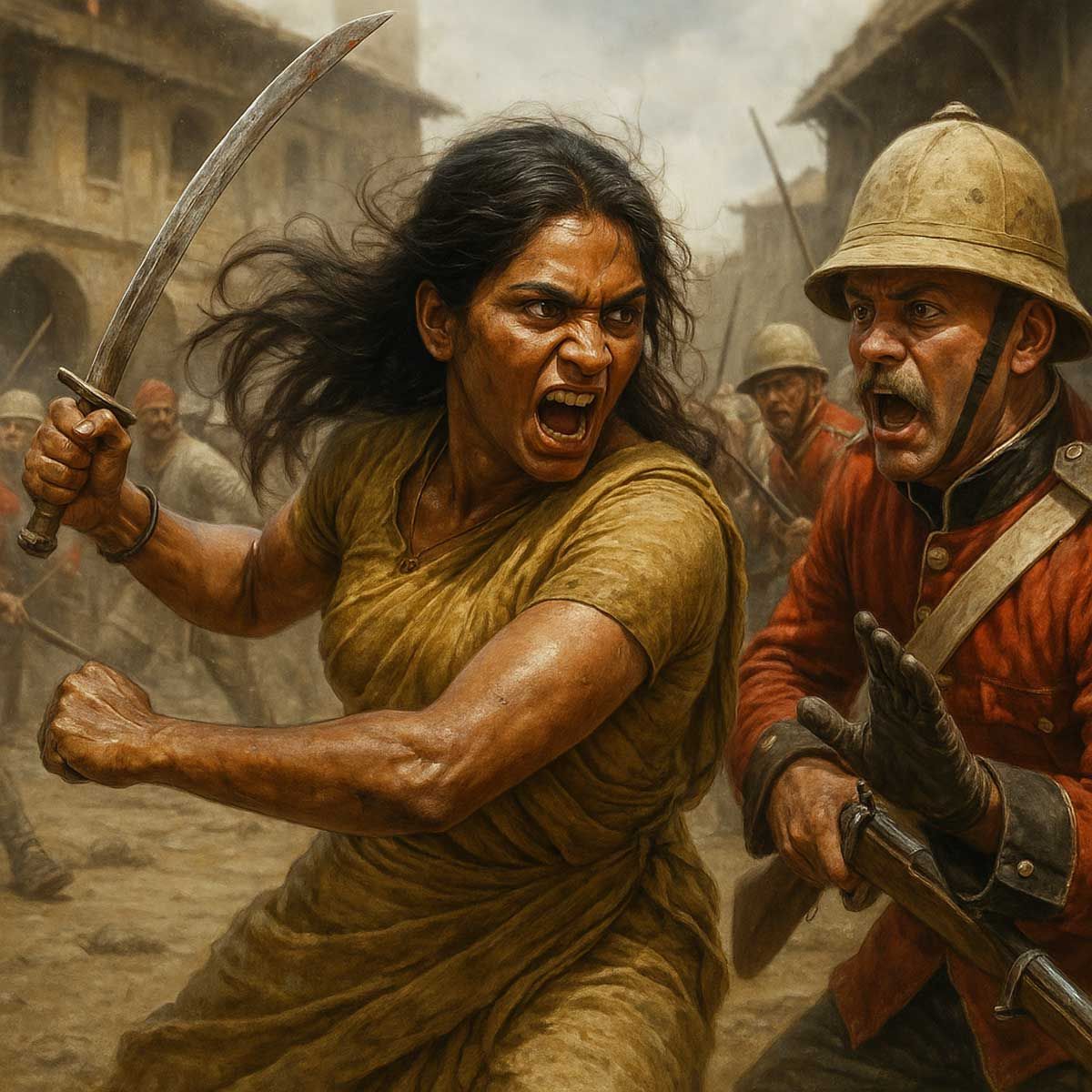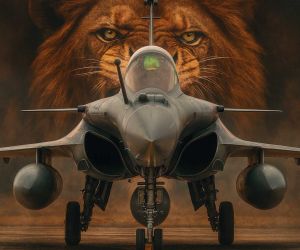MORE COVERAGE
Twitter Coverage
Satyaagrah
Written on
Satyaagrah
Written on
Satyaagrah
Written on
Satyaagrah
Written on
Satyaagrah
Written on
JOIN SATYAAGRAH SOCIAL MEDIA
"Crumbling Chronicles, their stories yearn to be retold": Each intricately carved stone horse in the Pir Panjals carries a profound secret. Once symbols of Bharat's grandeur, now overshadowed by indifference, and their plea for acknowledgment grows louder

In the heart of Bharat, a mystery unravels. While many are familiar with the 8,000-strong Terracotta Army that guards the tomb of China's First Emperor, far fewer have heard whispers of the enigmatic Horsemen of the Pir Panjal.
|
Hidden within the pristine terrains of the Pir Panjal, a sub-range of the majestic Great Himalayas stretching from Murree in Pakistan to the Rohtang Pass in Himachal Pradesh, lies a trove of history waiting to be discovered. Nestled in the Gool area of Ramban district, Jammu, one can stumble upon stone sculptures of warriors confidently seated on their steeds. The captivating tableau of these horses and their riders are slowly withering away under the weight of time. Yet, their exact era remains a puzzle, echoing the mystery they represent.
The Pir Panjal, with its towering peaks and deep valleys, has been more than just a geographical wonder. Ancient trade routes once traversed its expanse, weaving their way through the passes, locally known as Galis. And it's along these historical pathways, that lie our horsemen. Silent witnesses to the countless journeys and tales of old, these sculptures stand tall, revealing their existence only to intrepid trekkers and locals. A testimony to a time long past, their stories remain mostly confined within the region, waiting for the world to take notice.
While the origins and purpose of these sculptures are yet to be deciphered, what is undeniable is the allure they bring. A journey through the Pir Panjal is not merely a trek through nature but a dive into a rich tapestry of history and mystery. These stone sentinels, with tales untold, beckon to those with a thirst for adventure and a hunger for the unknown.
As one ventures deeper into the foot of the Galis, the Horsemen of the Pir Panjal make their majestic presence felt. These rock sculptures and reliefs, stationed strategically at various locations on the main Galis, stand as silent sentinels guarding age-old secrets.
Most of these intricate carvings depict valiant horsemen, but a keen observer might also find reliefs dedicated to local Gods and Devtas. An interesting feature associated with these artworks is the presence of a natural water spring nearby, often accompanied by a serene pond, adding to the mystical allure of the site.
|
Local legends sing tales of the creation of these sculptures, crediting them to the famed #Pandavas. As the folklore goes, during their period of exile, the Pandavas are believed to have graced this land and sculpted these stone guardians as a testament to their time spent here.
Yet, despite their historical and cultural significance, these artifacts remain largely untouched by the hands of modern development. The state government has overlooked their preservation, leaving them exposed to the elements and time. The potential of the site as a tourist destination remains untapped. Further, the site's guardianship hasn't been transferred to the Archaeological Survey of India (#ASI). However, upon a recent visit, an ASI officer conjectured that the sculptures might hail from the 18th century. He also marveled at the beautifully crafted waterfalls and ponds adorning the area.
It's a call to action, a plea for preservation, and a beckoning to delve deeper into the tales and mysteries that the Horsemen of the Pir Panjal offer. As each stone horseman stands tall, they serve as a reminder of the treasures waiting to be discovered and cherished.
Over time, the Archaeological Survey of India (ASI) has brought many historical treasures to light, digging up ancient sites scattered around the Pir Panjal region. However, it's the proactive stance of a unit of the Rashtriya Rifles that currently stands as the sculptures' main defense. Their determined efforts to shield these stone carvings are commendable, but the gravity of the situation necessitates expert intervention. The statues have endured decades, perhaps centuries, and now require professional care to halt their ongoing degradation.
The local community, seeing the historical significance of these artefacts, has raised its voice in unison, urging the government to recognize and preserve these ancient carvings as a heritage site. Their vision doesn't just stop at conservation; they see the vast potential for tourism, imagining a future where the area is buzzing with intrigued tourists, history enthusiasts, and scholars. Unfortunately, the current state of affairs paints a gloomy picture. With no proper fencing in place, many sculptures have fallen prey to both nature and human interference over time.
A dark chapter in this tale is the unauthorized removal of these artefacts by individuals from the higher echelons of the police and bureaucracy. Lured by the sculptures' innate beauty, they have transported them to adorn their residences. Thankfully, the vigilant residents, upon grasping the heritage value, have since halted such practices. They stand united in their mission to prevent influential figures from carting away pieces of their shared history.
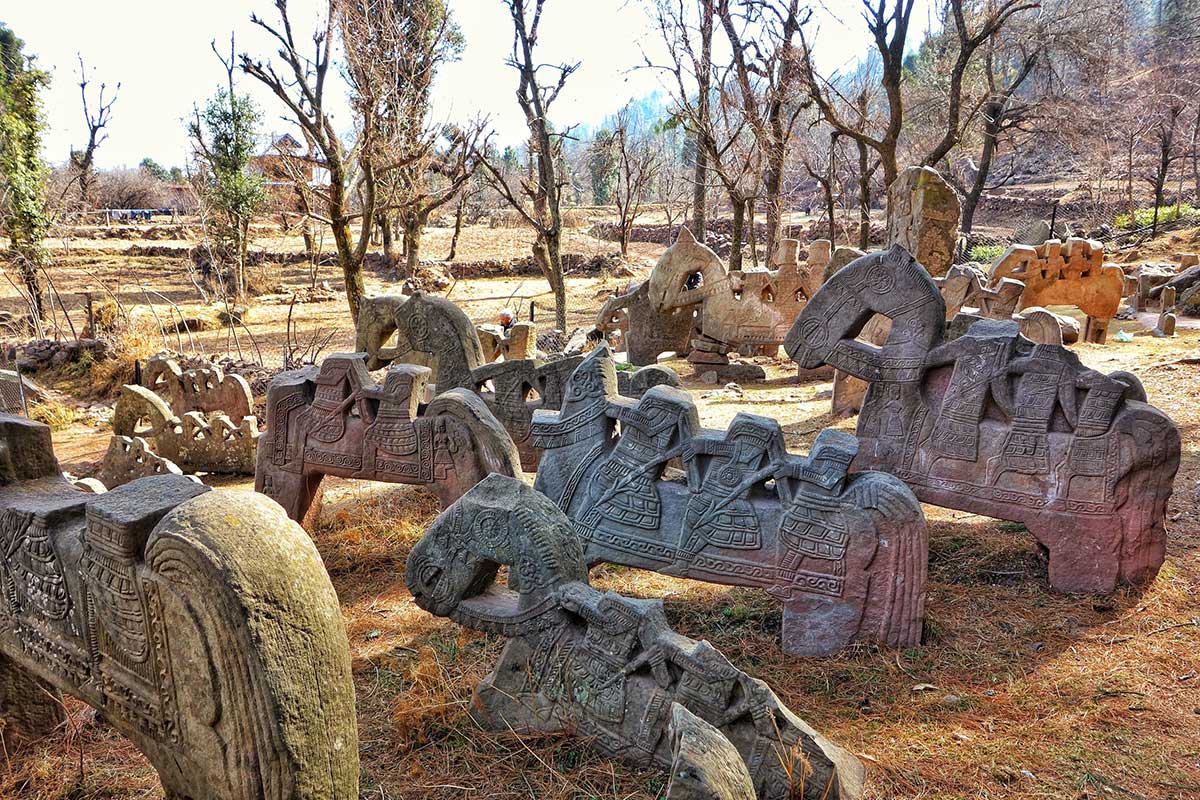 |
As the guardians of these timeless carvings rally together, the ball is now in the government's court. Will they rise to the occasion and safeguard a piece of the region's soul, or will history be lost to the annals of time? The Horsemen of the Pir Panjal await their fate.
Nestled within the embrace of the Pir Panjal mountain range, Gool stands as a testament to duality - the brilliant prowess of ancient artisans and the sinister shadow of modern-day terrorism. While the region proudly showcases its unparalleled rock sculptures, it also bears the scars of the tumultuous days when terrorists took control.
The notorious history of Gool depicts it as an infiltration gateway leading into the valley and other parts of Jammu. This past, dominated by terror groups, persisted until the army's intervention. Brave soldiers were airdropped into the region to confront and neutralize the extremist threat. But Gool's past continues to echo in the present, with concerning whispers suggesting the resurgence of terrorism in the area.
Contrastingly, scholars drawn to the area, not by its grim past but by its artistic marvels, present an intriguing perspective. Their studies posit that these captivating sculptures were strategically positioned at vantage points across ancient routes weaving through the Pir Panjals. Such locations likely acted as rest stops for travelers and their horses, offering much-needed reprieve after the challenging journey across a Gali. Furthermore, these stone sentinels may have played a critical role in navigation, guiding voyagers on their paths.
The juxtaposition of Gool's rich artistic history with its recent turbulent past underscores the region's resilience. As the land of the Horsemen of the Pir Panjal continues to evolve, one hopes that its future leans towards the preservation of its artistic legacy and lasting peace.
|
Amid the picturesque terrains of the Jammu region, an enigmatic tale unfolds — one sculpted in stone and shrouded in mystery. The intricate Horsemen of the Pir Panjal stand as resilient guardians, their very presence narrating an epoch of history long gone. Found in varying sites such as Ramban, Sangaldan Gool road, Gadi Nalla, Nar, Sildhar, and notably Ghora Gali, these statues remain as evocative markers of the past.
It's intriguing how the geographical distinction of the Gool Gulabgarh area symbolizes the cultural confluence of the Jammu and Kashmir regions. The rich tapestry of its populace - Dogri, Gujri, and Kashmiri speakers - resonates with the eclectic nature of these sculptures. While the Ghora Gali site, aptly named after these equestrian statues, is accessible by road, others demand treks through undulating terrains. Tales suggest numerous such locations are scattered across the mountainous expanse, but their exact count remains elusive.
The meticulous artistry of these sculptures is evident in their varying sizes and depictions, reflecting a depth of craftsmanship. It's awe-inspiring to witness horse statues adorned with one, two, or even three riders, all poised in diverse stances. Their armed demeanor, coupled with a diverse array of weapons, hints at their depiction as warriors, perhaps signifying a campaign or expedition from a bygone era. Interspersed among these valiant statues are reliefs showcasing local deities and abstract geometric patterns. However, it's the valiant Horsemen that form the primary essence of these sites, serving as silent witnesses to a time when they might have symbolized valor and gallantry in the face of adversity.
Tracing the roots of the Horsemen, local tales weave an enchanting narrative linking them to the legendary Pandavas. As the folklore suggests, during their period of exile, the Pandavas might have taken refuge in this region, leaving behind a legacy etched in stone. Yet, some theories challenge this, pointing instead to the skilled local craftsmen as the creators. What complicates the mystery further is the distinct Bactrian influence observed in the attire and armament of the Horsemen, which differ significantly from the Indic traditions.
The deities depicted, too, stand apart from the contemporary religious representations, hinting at a distinct cultural blend or perhaps an evolution of faith that was once prevalent in the area. The intricate geometric patterns that embellish the stones contribute another layer to this enigma. Their origin, purpose, and the people who etched them remain subjects of speculation and intrigue.
|
However, one undeniable truth emerges from these speculations - the prowess of the creators. The intricate detailing, the meticulous craftsmanship, and the sheer number of these statues highlight a society deeply invested in artistic expression. These sculptures stand testament to a community with a profound understanding of artistry. The perennial question persists: who were these gifted craftsmen, and what compelled them to create an army of stone Horsemen in such a remote terrain?
Delving into the annals of history and tradition, most mountain passes and terrains in the Indian subcontinent boasted sculptures or temples dedicated to the prevailing deities of that era. This makes the omnipresence of the Horsemen in the Pir Panjal region even more intriguing. No other part of the Indian subcontinent bears witness to such an artistic phenomenon, making these statues uniquely tied to this terrain.
Could these sculptures be relics left behind by a foreign army on a campaign through the region? Central Asia has a profound history of venerating the Horsemen, and perhaps an army, finding themselves in the Pir Panjal, felt compelled to mark their presence, creating these artistic masterpieces. Over time, they could have integrated with the locals, leaving behind just these stone figures as a testament to their existence.
A visit to the Ghora Gali site offers tangible proof of the vastness and depth of this mysterious legacy. More than 200 statues, each distinct in size, design, and condition, pepper the terrain. While some continue to stand tall against the test of time, others lay fragmented, and yet some seem to be reclaimed by the Earth, awaiting discovery. The possibility of even more of these magnificent structures lying undiscovered beneath the soil adds to the allure of the site. Unearthing them could unveil further layers to this enigmatic tapestry, presenting clues that might help decipher the mystery.
It's an unfortunate irony that these exquisite relics, which have withstood the ravages of time, nature, and man, are now facing the dual threats of neglect and obscurity. As with many historical artifacts across the world, the true essence of these sculptures may be getting lost in bureaucratic red tape, lack of funding, and an overall apathy towards heritage conservation.
The Bactrian/Greek influence observed in these sculptures could be an incredible piece in the puzzle of historical migratory patterns, trade routes, or even ancient conquests. Such a blend of cultures reflected in art is not only unique but holds significant historical value, providing insight into ancient societies and their interactions.
While local folklore provides a romantic narrative, the true origins and history of these sculptures require rigorous scientific inquiry and interdisciplinary research. Collaborative efforts between historians, archaeologists, and art historians could be the key to unraveling this mystery.
Furthermore, the potential of these sites as tourist attractions is vast. With proper preservation, promotion, and infrastructure in place, these areas could serve as a boon to the local economy, bringing in revenue and generating employment opportunities.
However, the first step remains awareness. Local communities, NGOs, historians, and even international bodies must rally to save these ancient treasures from fading into oblivion. Efforts should be made to not just protect and preserve these sculptures but to also facilitate research, thereby honoring the rich legacy and craftsmanship of a civilization long gone. As the story of the Horsemen of Pir Panjal awaits its rightful place in the annals of history, it is up to us, the keepers of the present, to ensure that their tales do not become mere whispers lost in the winds of time.
It's heartening to know that some steps are being taken, albeit slowly, to preserve and promote the Ghora Gali site. The mere act of fencing can prevent a significant amount of damage from grazing animals and limit human interference that might be detrimental to the sculptures.
Promotion of the site as a tourist destination is a double-edged sword. While it could ensure better preservation and generate funds for further research and restoration, it's also essential to manage tourism sustainably. Increased footfall should not come at the cost of the site's integrity. Infrastructural developments like pathways, informative signboards, and guided tours can provide a balanced approach, offering visitors insights while ensuring the site remains undisturbed.
Local communities can play a crucial role in the conservation process. Training and employing locals as guides can ensure that the cultural narrative stays true to its roots. Moreover, it can provide economic opportunities for the community, fostering a sense of ownership and pride in their heritage.
The Horsemen of the Pir Panjals are not just mute stone figures. They are a testament to a time gone by, a story waiting to be told, and a mystery yet to be fully unraveled. As the world moves rapidly towards modernity, it becomes even more vital to pause, look back, and cherish the treasures of our past. It's not just about preserving stone structures but about safeguarding the rich tapestry of human history, craftsmanship, and culture. Let's hope that the winds of change blow in favor of these ancient guardians and the tales they hold within their stone-clad silhouettes.
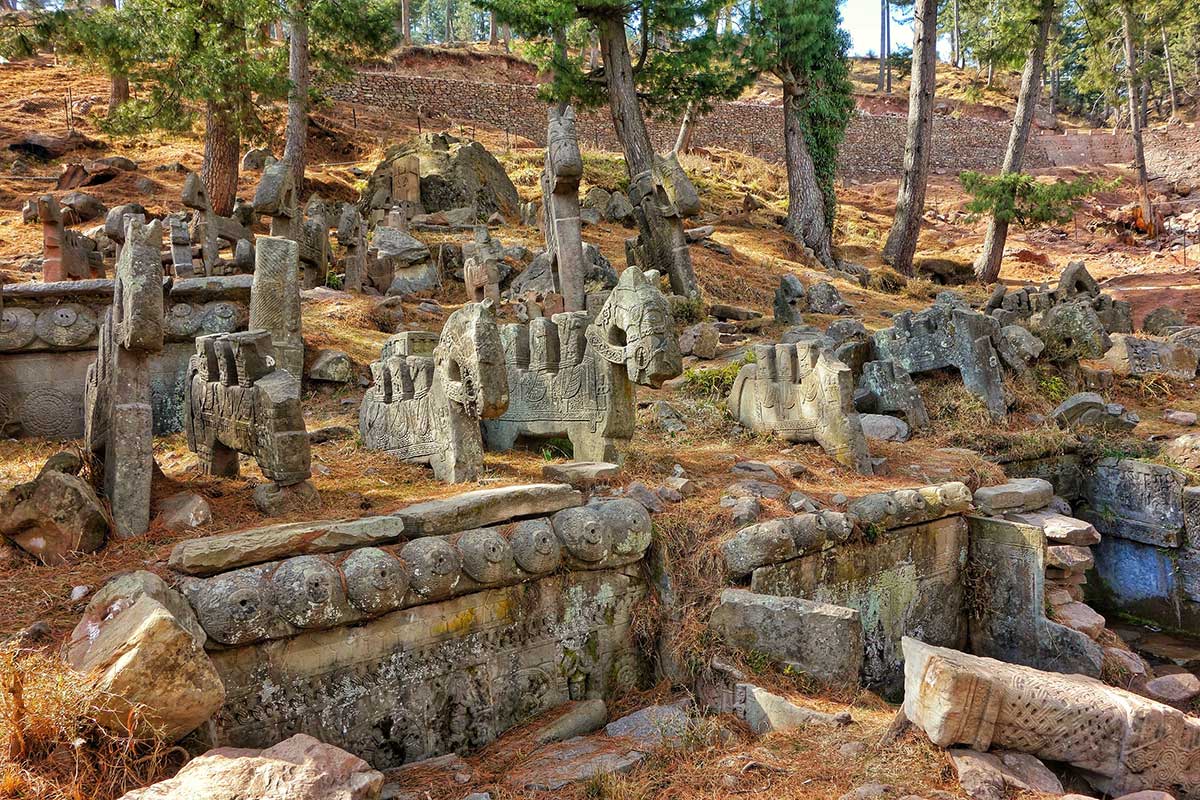 |
 Support Us
Support Us
Satyagraha was born from the heart of our land, with an undying aim to unveil the true essence of Bharat. It seeks to illuminate the hidden tales of our valiant freedom fighters and the rich chronicles that haven't yet sung their complete melody in the mainstream.
While platforms like NDTV and 'The Wire' effortlessly garner funds under the banner of safeguarding democracy, we at Satyagraha walk a different path. Our strength and resonance come from you. In this journey to weave a stronger Bharat, every little contribution amplifies our voice. Let's come together, contribute as you can, and champion the true spirit of our nation.
 |  |  |
| ICICI Bank of Satyaagrah | Razorpay Bank of Satyaagrah | PayPal Bank of Satyaagrah - For International Payments |
If all above doesn't work, then try the LINK below:
Please share the article on other platforms
DISCLAIMER: The author is solely responsible for the views expressed in this article. The author carries the responsibility for citing and/or licensing of images utilized within the text. The website also frequently uses non-commercial images for representational purposes only in line with the article. We are not responsible for the authenticity of such images. If some images have a copyright issue, we request the person/entity to contact us at This email address is being protected from spambots. You need JavaScript enabled to view it. and we will take the necessary actions to resolve the issue.
Related Articles
- Construction of Ram Mandir in Ayodhya is in full flow with the foundation work finished, main contractor for construction is Larsen & Toubro while Tata Consulting Engineers are project management consultant
- "Who is Hindu": In real sense, grand tradition can be defined and understood as ten thousand faiths gathered in harmony under a single umbrella is Hinduism, Sanatan Dharma, where dharma is the duty, and karma is our actual behaviour
- Exclusive visuals of Shivling inside the wuzukhana of Gyanvapi mosque compound surfaces, motifs of Swastika, Trishul, Lotus, and Hindu deities engraved on walls of the basement: clearest sign yet of existence of a Hindu temple
- "Copyright? Copy RIGHT: Steal ideas, steal facts but do not steal words": Did you know the Greek version of Trojan Horse at Troy from Odyssey was an adaptation of the original Indian version of the Trojan White Elephant from Brihatkatha, a Sanskrit play
- “Let my heart be still a moment and this mystery explore”: Skeletons of Roopkund Lake of Chamoli, India - legend of Nanda Devi so enraged at outsiders who defiled her mountain sanctuary that she rained death upon them by flinging hailstones “hard as iron”
- "Movement of formless to form - Shivalinga": Supreme manifested as God through a threefold manifestation of Shaiva iconography, first manifestation Para-Shiva, second Sadashiva and third Mahesha, iconography started during Kushan period
- "Nataraj, Nataraja, Jai Shiva Shankara Nataraja": One of mystical forms of Lord Shiva ‘Nataraj that represents the Lord’s cosmic dance that symbolizes both the destruction and the creation of the universe, revealing the cycles of death and birth
- "Aum Mahadevaya Namaha - The Great Universal God": Sanatana Dharma forces human mind, time and time again, to accept the fact that Divine is all that exists, both clean and unclean, pure and impure, auspicious and inauspicious
- “Dharma is law in its widest sense—spiritual, moral, ethical and temporal": How Chanakya's Arthashastra shaped the Telling of Ancient Indian History and should be read simply for its sheer brilliance in the area of statecraft and economics
- "Words on a page can hypnotize you if the rhythm is right": “Kalinga narthana” literally means “Kalinga dance” in Sanskrit, referring to a legend in which Shri Krishna, as a young boy, danced on the serpent Kaliya to stop him from poisoning Yamuna river
- "Faith moves mountains, and stones tell tales": Omkareshwar to Ayodhya - A journey not just of distance but of deep-rooted faith, carved from the sacred Narmada waters, the 600kg Narmadeshwar Shivling's odyssey resonates the hymns of billions in unison
- "Where snakes are family, fear sheds its skin": Maharashtra, in Shetpal village cobras roam freely amongst residents, a unique testament to India's deep-rooted harmony with nature, challenging perceptions and captivating visitors with its serpentine charm
- "Three things cannot long be hidden: the sun, the moon, and the truth": It was not Isaac Newton but Rishi Kanad who first discovered "Laws of Motion" at least 2000 years before Newton in his Vaishesika Sutras, was also known as "Father of Atomic Theory"
- “If we are to preserve culture we must continue to create it”: Bedara Vesha of Sirsi town is a unique folk dance with a legend of 300 years which is performed every alternate year to celebrate largest Holi festival of Karnataka, also known as Hunter Dance
- “Who says exactly what they’re thinking? What kind of a game is that?”: Committed Marxist, Prof. Berlowitz teaches “resistance” as in, “Privatization must be resisted,” - only a Marxist could make the connection between resisting privatization and peace

